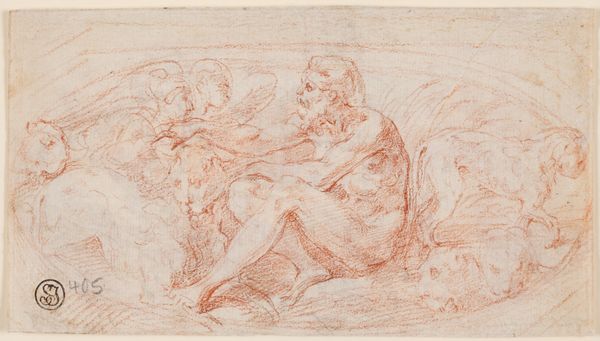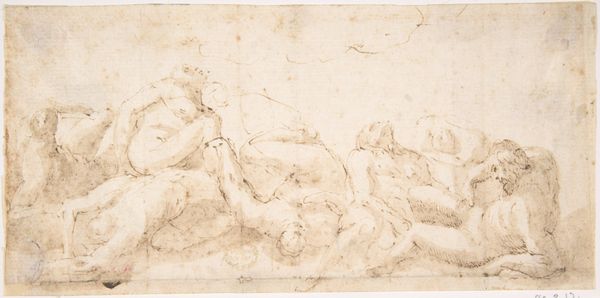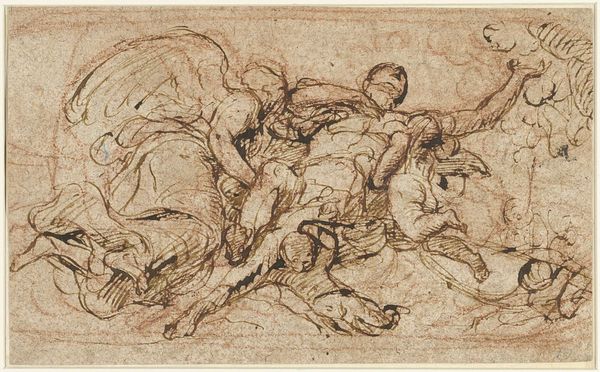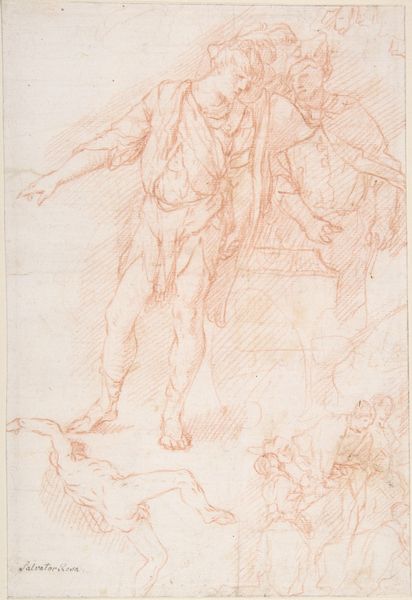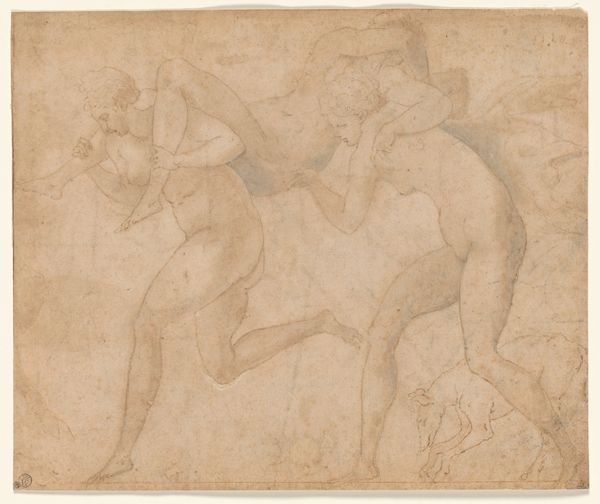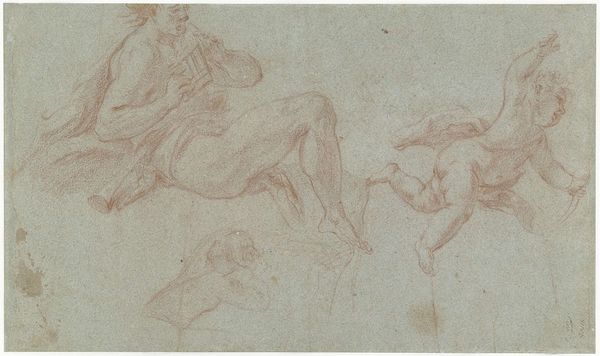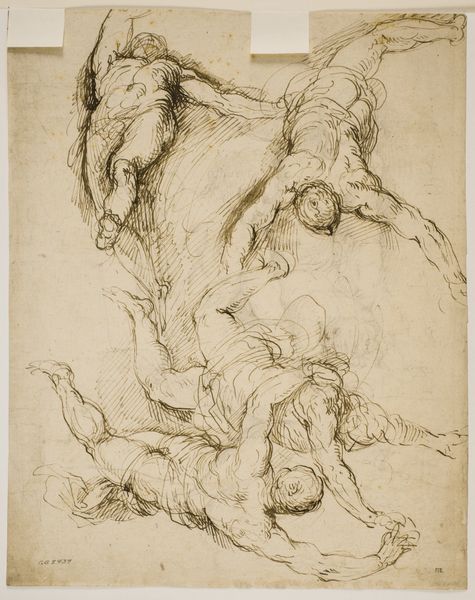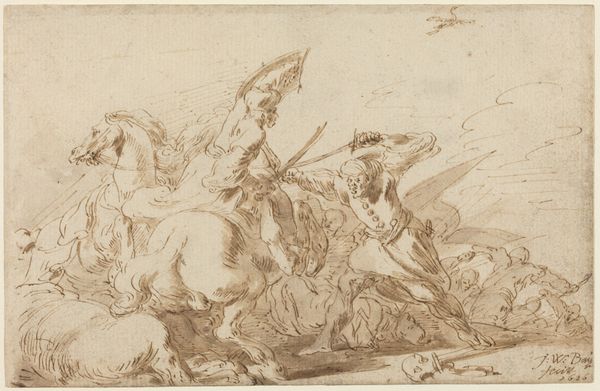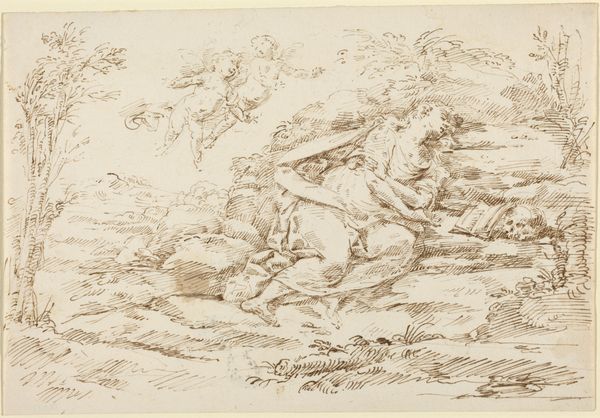
drawing, print, ink, pen
#
portrait
#
drawing
#
ink painting
# print
#
pencil sketch
#
11_renaissance
#
ink
#
pen
#
history-painting
Dimensions: 3-9/16 x 4-3/4 in. (9.0 x 12.1 cm)
Copyright: Public Domain
Editor: We're looking at an ink and pen drawing entitled "Awe-struck Saint Jerome," created sometime between 1600 and 1700. The figure is very expressive; the scene feels chaotic, full of implied motion. What narratives do you see unfolding in this piece? Curator: It's interesting to consider Saint Jerome as a figure situated within larger systems of knowledge production and power. Here, he's not just a translator of religious texts, but a figure grappling with the implications of that knowledge. What does it mean to be "awe-struck" in a world governed by religious doctrine? Does his awe stem from genuine spiritual experience, or from the dawning awareness of the potential for manipulation inherent in religious texts? The skull, the books, they're all symbolic props, but they also represent the very real intellectual labor and ideological frameworks of the period. Editor: I see your point. The books, while representing knowledge, could also represent institutional power and control. So, the "awe" isn't necessarily spiritual; it could be societal or political. Curator: Exactly. And think about who typically had access to these texts, who was shaping the narrative. How does Saint Jerome's image, often depicted in a posture of humility or piety, play into these power dynamics? Is the artist subtly critiquing the role of religious figures as gatekeepers of information? We must consider the historical context: How might the changing socio-political landscape of the 17th century influence the depiction of religious figures like Jerome? Editor: That’s given me a completely different lens through which to view this artwork. Thanks! Curator: And thank you for engaging! Art history isn't just about aesthetics; it's about understanding the complex interplay of power, identity, and representation throughout history.
Comments
No comments
Be the first to comment and join the conversation on the ultimate creative platform.
